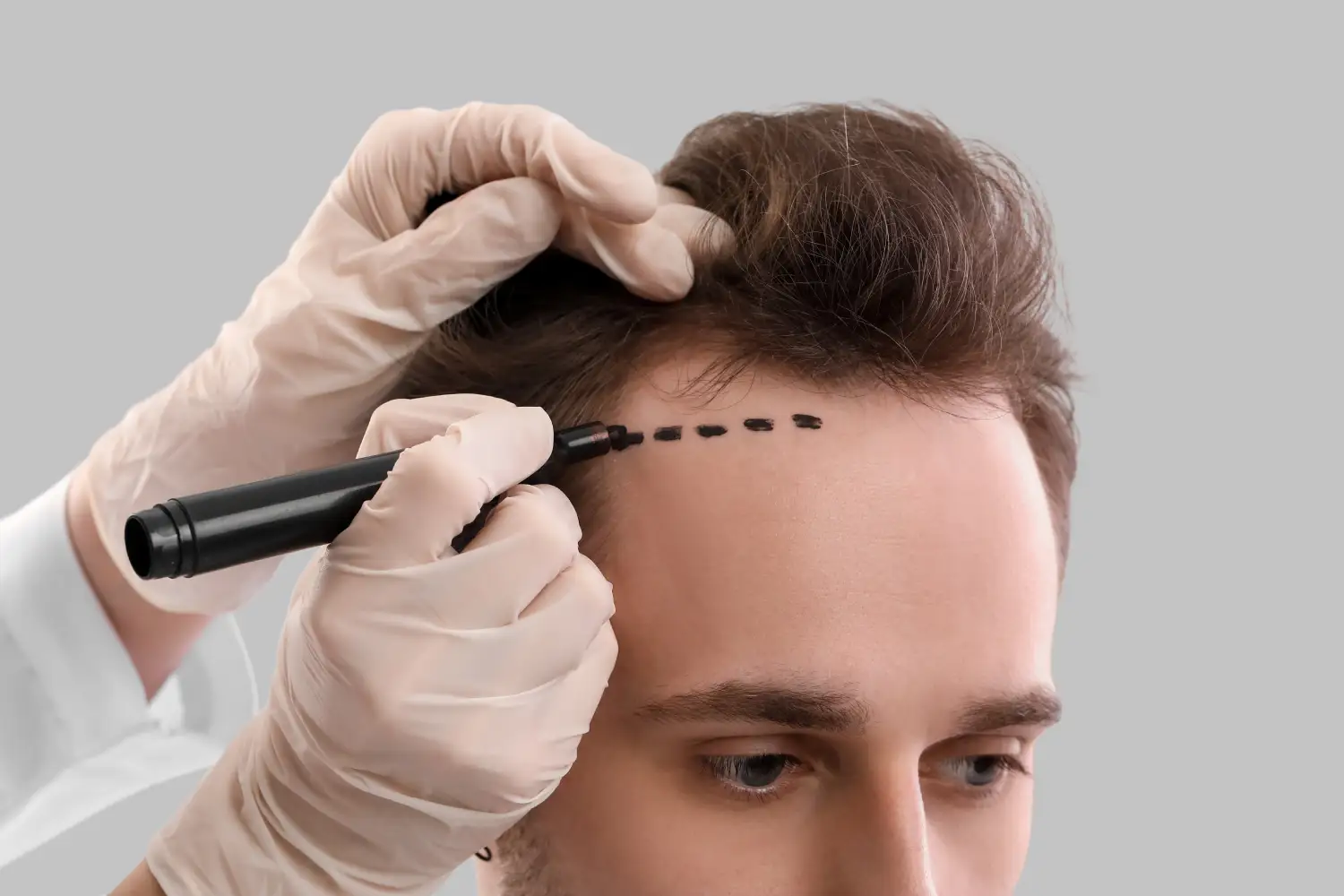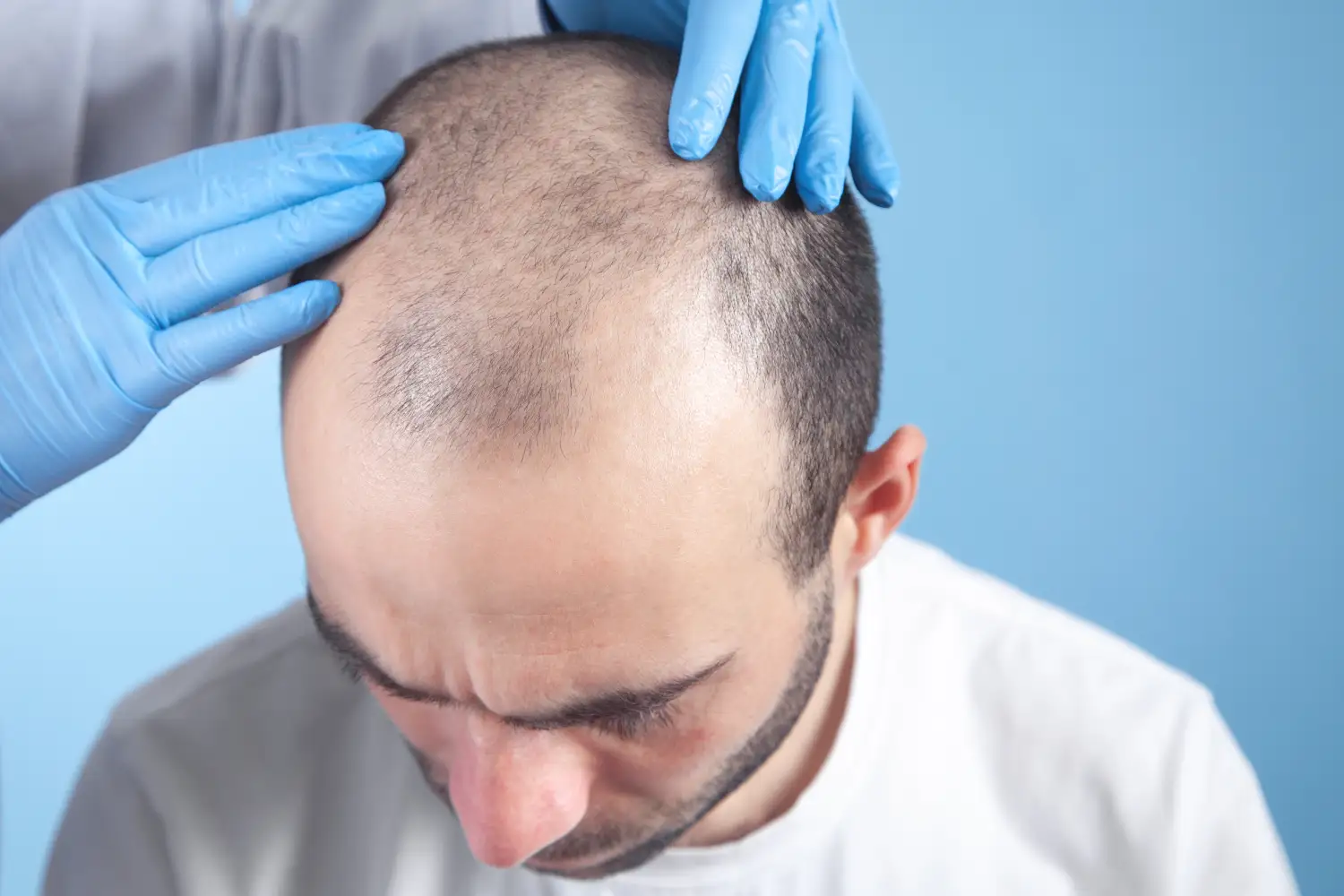Hair transplant procedures have seen a significant surge in interest in Australia, particularly as advancements in techniques and technology have improved the efficacy and safety of the procedure. However, not everyone experiencing hair loss is a suitable candidate for hair transplantation. This comprehensive guide will help you understand whether or not hair transplants are the right solution for your hair loss.
Understanding Hair Loss
Hair loss can be attributed to a myriad of causes. The most common among these is androgenetic alopecia or pattern baldness, affecting both men and women. This type of hair loss usually affects the hair follicles on the front and top of the head, while those on the sides and back remain largely unaffected and can be successfully transplanted to the thinning areas.
Another type of hair loss is Diffused Unpatterned Alopecia (DUPA), a condition characterised by thinning hair not only in the front and top of the scalp, but also in the sides and back. DUPA is relatively uncommon, affecting only 2-6% of men with hair loss and is not suitable for hair transplantation due to the lack of a stable donor zone.

Non-Surgical Hair Restoration Therapies
Before considering hair transplantation, non-surgical hair restoration therapies should be the first line of treatment. These therapies include:
Plasma Rich Platelets (PRP) Hair Loss Treatments
PRP hair restoration treatments use the patient’s own blood to promote healing and potentially stimulate hair regrowth.
Platelet Rich Fibrin (PRF) Hair Loss Treatments
PRF hair treatments is a 100% autologous biomaterial, it can accelerate wound healing and tissue regeneration, can increase stimulation of osteogenesis and new blood vessel formation.
Hair and Skin Science is the first clinic in Australia to provide PRF hair loss treatments. Pioneered in the US, now available in Australia, we are now offering this exclusive treatment in our Melbourne, Sydney, Brisbane, Gold Coast, Sunshine Coast, Canberra, Adelaide and Perth clinics.
If these treatments fail to yield satisfactory results, hair transplantation may be an option to consider.
Assessing Hair Transplant Candidacy
Not all individuals experiencing hair loss are suitable candidates for hair transplantation. Ideal candidates for a hair transplant procedure typically fall within the following criteria:
- Aged between 25 & 65
- Suffering from pattern baldness
- Experiencing hair loss for more than five years
- Hair loss has stabilised
- Having potential ‘donor hair’ that is dark, thick and not very curly
- Hair follicles are healthy
- Excellent general health
- Realistic expectations
If most of these criteria apply to you, a hair transplant is likely to yield a positive outcome.
Understanding Hair Transplant Options
Prospective hair transplant patients should familiarise themselves with the current hair transplant techniques. Hair transplant technology has advanced significantly over the years, with two primary techniques now at the forefront: Follicular Unit Transplantation (FUT) and Follicular Unit Extraction (FUE).
Most hair transplants today use the FUE technique, which involves extracting individual hair follicles from the rear of the scalp and then implanting them one at a time in the areas of hair loss. The FUE technique is generally favoured over FUT due to its less invasive nature, faster recovery, and better results for those with less dense hair.

Understanding Hair Transplant Recovery
The recovery process is another important consideration when contemplating a hair transplant. The FUE method can be performed without shaving the head and is generally pain-free. However, patients may experience discomfort when the scalp is first numbed and will be prescribed pain relief medication for the first few weeks of recovery.
Recovery milestones include:
First 1-2 Weeks: Management of swelling and formation of scabs that will fall off by the end of the second week. Most patients return to work within one week.
First Month: Avoiding hot showers, excessive sweat, and strenuous activity. Keeping the head away from direct sunlight to prevent discolouration and visible scarring.
Six Months: Around this time, the transplanted hairs will start to blend naturally with the existing hair, and the donor site will begin to heal and become less noticeable.
By approximately one year, the final results will be visible, with a fuller, thicker head of hair.
Maintaining Your Hair Transplant Results
Once you achieve your desired results, it’s crucial to maintain them. The transplanted hair follicles will not undergo balding as they are different from the ones that originated in the transplanted area. However, non-transplanted hair may continue to thin. Continuing a hair restoration therapy routine can prevent further hair loss from non-transplanted follicles.

Hair and Scalp Characteristics Affecting Hair Transplant Success
Certain hair and scalp characteristics can affect the success of hair transplantation, including:
Hair Colour
The contrast between hair and scalp colour can affect the visibility of bald areas. Less contrast results in less noticeable hair loss.
Hair Thickness
Thicker hair reduces the amount of light reflecting from the scalp, leading to a better overall appearance.
Hair Density
A good density of hair follicles around the donor areas is crucial for achieving successful results.
Hair Texture
Wavy or curly hair can yield better results without needing as many follicular units.
Scalp Flexibility
A loose scalp facilitates the removal and transplantation of hair follicles.
Understanding Hairlines and Ageing
A hair transplant should aim to provide a hairline that suits you for the rest of your life. While some patients may request a hairline matching their teenage years, this can lead to an unnatural appearance as hair loss continues with age.
Consultation and Decision Making
Consultation with a hair transplant surgeon is the first step in deciding whether hair transplantation is right for you. During this consultation, you should consider the level of your hair loss, the state of your donor hair, understanding the reality of what a hair transplant can and can’t do, the pros and cons, financial implications, and the required time off work.
Why Choose Dr. Charlotte Ying from Hair & Skin Science for your FUE Hair Transplant?
Hair and Skin Science is a trusted national company of clinics specialising in FUE hair transplants. With clinics situated in Melbourne, Sydney, Brisbane, Gold Coast, Sunshine Coast, Perth, Canberra & Adelaide, they provide top-quality hair transplant services at competitive prices.
✅ Fully qualified, Australian-trained cosmetic surgeon. Surgical fellow
✅ Dr. Ying is hands-on during entire hair transplant procedure, maximising success of your hair transplant and reducing risk
✅ Neograft machine used with your hair transplant. A minimally invasive state-of-the-art implantation technology potentially increasing survival rate of your newly transplanted hair follicles
Our team of experienced surgeons and registered nurses offer free consultations based on your requirements, helping you understand the procedure and providing a customised treatment plan.
Choosing the Right Hair Transplant Clinic
Choosing the right hair transplant clinic is essential to ensure successful results. Hair and Skin Science, a national company of clinics based in Melbourne, Sydney, Brisbane, Gold Coast, Sunshine Coast, Perth, Canberra & Adelaide, specialises in hair transplants. We offer free consultations by a medical doctor or registered nurse to help you decide on the best treatment options for your hair loss.
In conclusion, hair transplantation can be a viable solution for many individuals experiencing hair loss. However, it’s crucial to understand the procedure, assess your candidacy, and have realistic expectations to achieve successful results.



